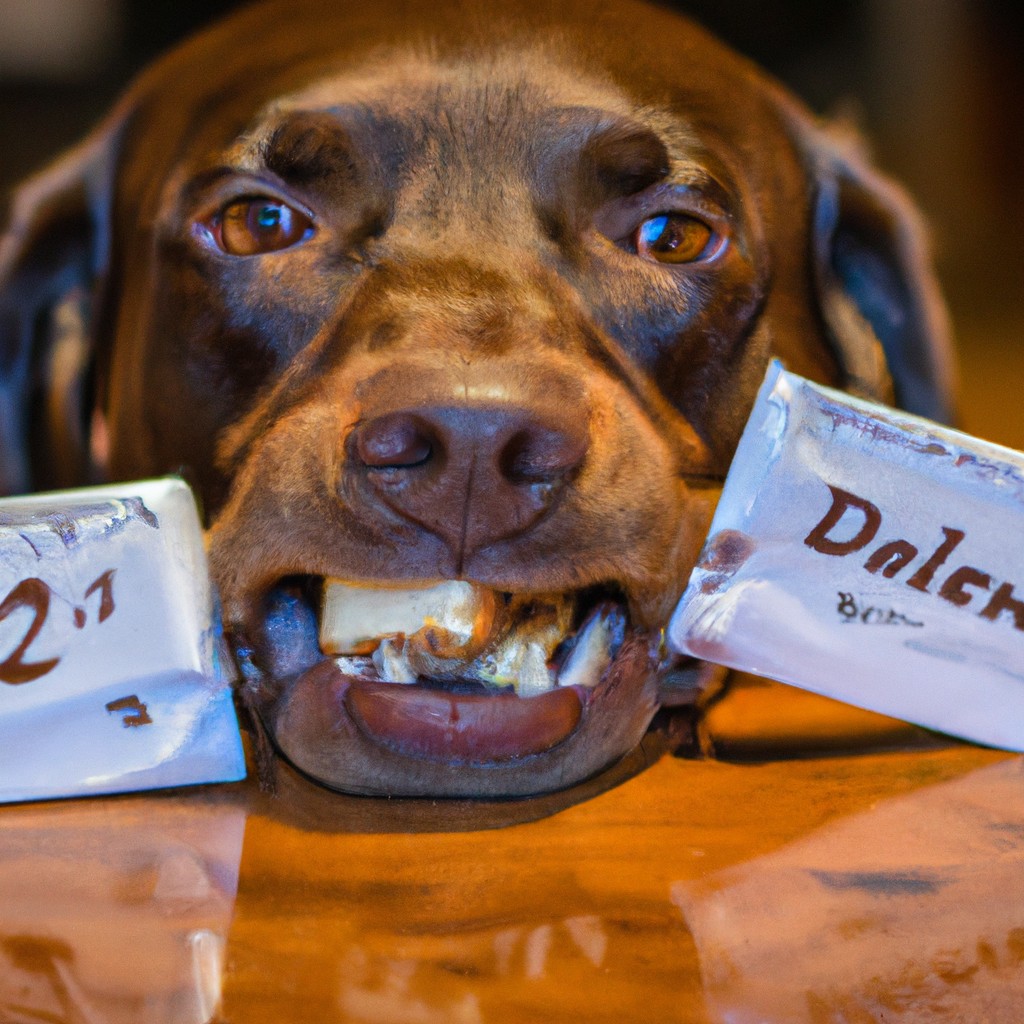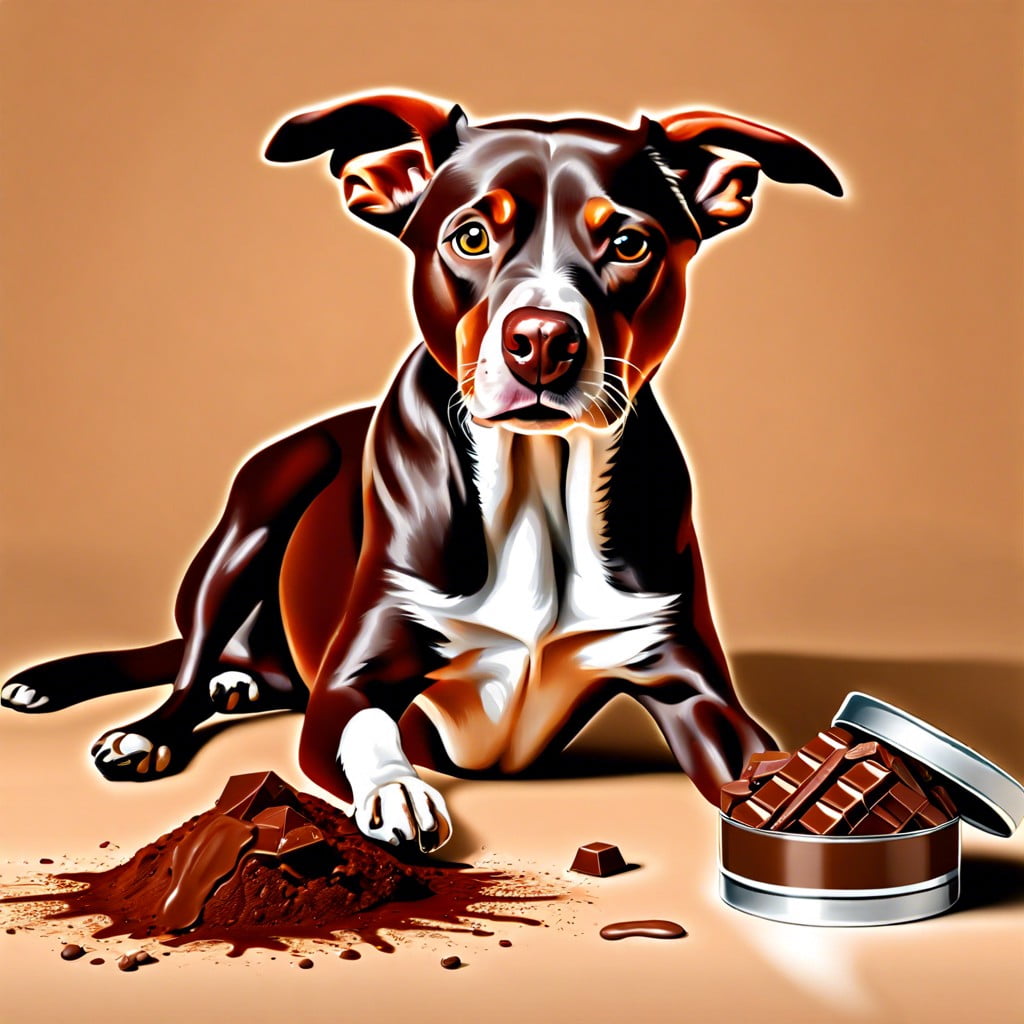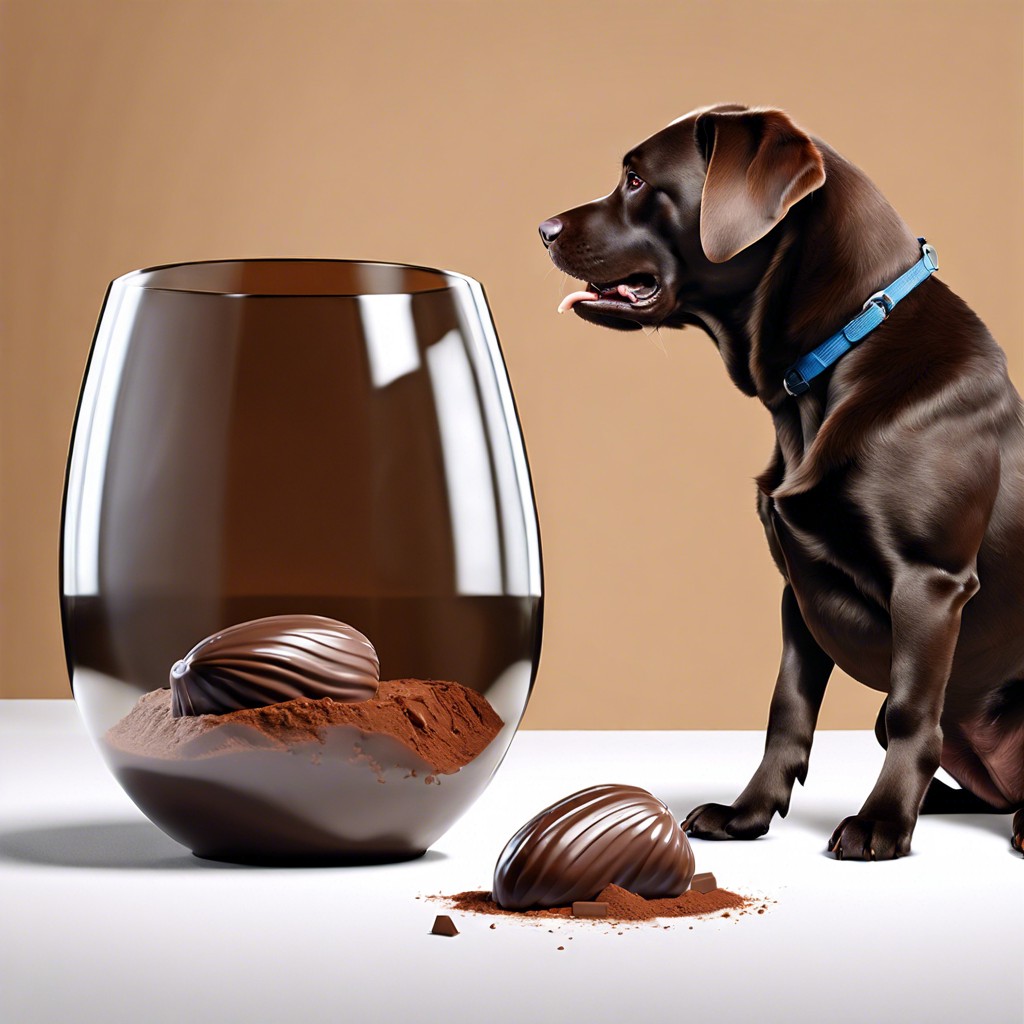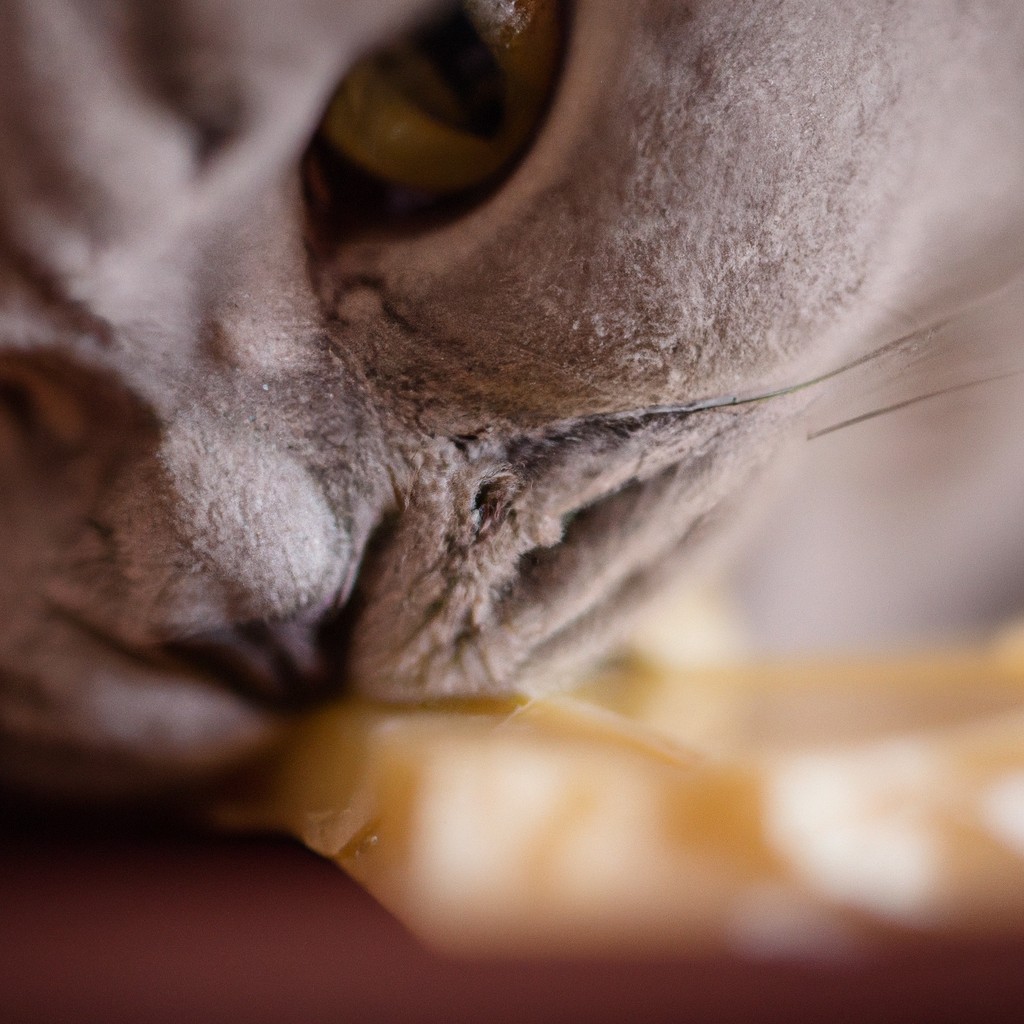Despite popular belief, dogs should not eat chocolate, as it contains theobromine, which can lead to various medical complications and even be fatal.
Key takeaways:
- Dogs should not eat chocolate, it can be fatal.
- Toxicity depends on type, amount, and dog’s size.
- Theobromine is the primary compound that makes chocolate toxic.
- Symptoms include vomiting, restlessness, increased heart rate.
- Take immediate action and contact a veterinarian if your dog eats chocolate.
Inside
How Much Chocolate Is Toxic for Dogs?

The toxicity of chocolate for dogs depends on several factors, primarily the type of chocolate, the amount consumed, and the dog’s size. For instance, white chocolate contains minimal theobromine, a compound that’s toxic to dogs, while cocoa powder, baking chocolate, and dark chocolate have much higher levels.
As a rough guideline:
- White chocolate: generally harmless in small quantities, yet high fat content is unhealthy.
- Milk chocolate: potentially harmful at over 3.5 grams per pound of body weight.
- Dark chocolate: toxic at roughly 1 gram per pound of body weight.
- Baking chocolate or cocoa powder: as little as 0.1 ounce per pound of body weight can be lethal.
It’s imperative for dog owners to understand that no amount of chocolate is considered safe for dogs. Even a small amount can cause issues, and larger amounts can be fatal. If you suspect your dog has ingested any chocolate, immediate veterinary care is vital.
What Makes Chocolate Toxic to Dogs?
The primary culprit behind chocolate’s toxicity to dogs is a compound called theobromine. Similar to caffeine, theobromine stimulates the central nervous system and cardiac muscles. While humans can easily metabolize theobromine, dogs process it much more slowly, allowing it to build up to toxic levels in their system.
The amount of theobromine varies by the type of chocolate:
- White chocolate – Negligible amounts.
- Milk chocolate – 44-58 milligrams per ounce.
- Semi-sweet chocolate – 138 milligrams per ounce.
- Dark chocolate – Up to 160 milligrams per ounce.
- Baker’s chocolate – As high as 390 milligrams per ounce.
Caffeine also contributes to chocolate toxicity, and while it’s present in lower amounts compared to theobromine, it still poses a risk to dogs. These substances can cause a range of health issues, from mild hyperactivity to potentially fatal cardiac arrhythmias.
Symptoms of Chocolate Poisoning in Dogs
If a dog ingests chocolate, symptoms can vary depending on the amount and type of chocolate consumed. Early signs, which can occur within a few hours, include:
- 1. Vomiting and diarrhea: These are often the first signs of chocolate toxicity and can lead to dehydration if not addressed quickly.
- 2. Restlessness and hyperactivity: Chocolate contains caffeine and theobromine, which can cause increased heart rate and excitement.
- 3. Increased thirst: The diuretic effect of chocolate may cause the dog to drink more water than usual.
- 4. Elevated heart rate: This can escalate to abnormal rhythms, known as arrhythmias, which are potentially life-threatening.
- 5. Muscle tremors and seizures: In severe cases, the dog may display twitching muscles or uncontrollable seizures.
- 6. Weakness or collapse: As the toxic effects progress, the dog may become weak, uncoordinated, or unable to stand.
These symptoms warrant immediate veterinary attention to prevent further complications. Early intervention is critical for the health and safety of the dog.
What Should I Do If My Dog Ate Chocolate?
If your dog ingests chocolate, urgent action is necessary:
1. Assess the situation: Determine the type of chocolate and the quantity consumed relative to your dog’s size and weight.
2. Collect information: Have the chocolate packaging on hand for reference, noting the cocoa content and any other ingredients.
3. Contact your veterinarian: Provide them with all the details of your dog’s chocolate consumption.
4. Follow professional advice: Veterinarians may instruct you to induce vomiting or bring your pet in immediately.
5. Monitor your dog: Keep a close eye on your pet for any changes in behavior or signs of distress.
Remember, quick and calm action is crucial for your dog’s well-being after chocolate ingestion.
Preventing Chocolate Poisoning in Dogs
Ensuring that chocolate remains out of reach is the first step in prevention. Store chocolate in closed cabinets or high shelves where dogs cannot sniff them out. During holidays like Easter or Halloween, when chocolate is more prevalent, monitor your dog closely and educate any guests on the importance of not sharing their treats.
Use dog-proof containers for extra security if you have a particularly curious pet. Be diligent when throwing out chocolate wrappers and remnants, as dogs may rummage through the trash and find these items.
Training can also play a significant role in prevention. Teach your dog the “leave it” command to control their impulse to pick up unauthorized food items. Regularly reinforcing obedience training will give you greater control and can prevent your dog from consuming chocolate accidentally.




